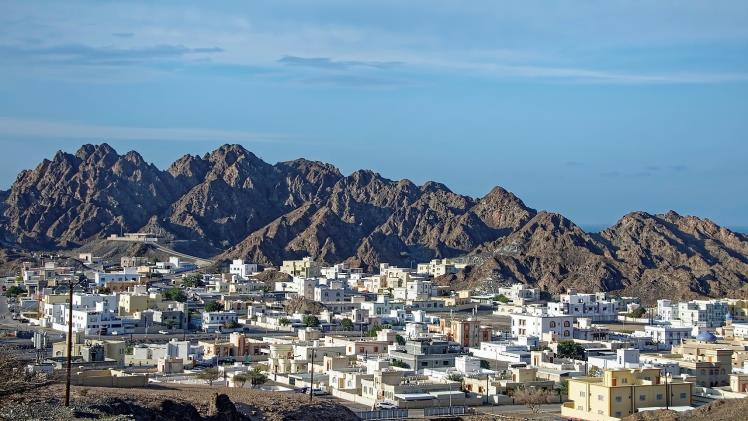The Sultanate of Oman, nestled at the southeastern corner of the Arabian Peninsula, is a refreshing journey into the past. Away from the bustling metropolises of the Middle East, Oman offers a certain magic that cloaks it in mystery. It invites travelers with tales of old and a promise of undiscovered beauty.
But before learning about Oman, a note to eager adventurers: always ensure you have a travel visa for Oman. The process is straightforward, as you can easily get the visa online. Make sure you have a valid passport, and the form will take you a few minutes to complete.
Between the Dunes: Wahiba Sands
Imagine standing on a beach, gazing out at the sea as it stretches before you, its surface rippling in the wind. The smell of dry earth mingles with the scent of frankincense, one of Oman’s most precious commodities. As you camp under the stars at Wahiba Sands, the chilly desert breeze plays a serenade and the horizon is painted in a shade of crimson by the setting sun.
Visiting the Wahiba Sands (also known as Sharqiya Sands) in Oman offers a glimpse into the traditional Bedouin lifestyle amidst vast desert dataroma.
Here’s how you can make the most of your visit:
When to Visit: The best time to visit is during the cooler months from October to March. Summers in the desert can be extremely hot and are not recommended for tourists.
Getting There: The closest town to Wahiba Sands is Bidiyah. You can drive or hire a taxi to Bidiyah and from there, 4×4 vehicles are recommended to enter the desert. You might want to rent a 4×4, or hire a local guide who knows the area.
Accommodation: There are several desert camps in Wahiba Sands ranging from basic to luxury. Staying overnight is highly recommended. Some popular desert camps are Desert Nights Camp, Nomadic Desert Camp, and Wahiba Bedouin Rustic Camp.
Of Turquoise Waters and Limestone Caves: Wadi Shab
Going just a little bit south, the desert gives way to oases. Wadi Shab is not just another gorge; it’s a symphony of turquoise waters, dramatic cliffs, and secret caves. As you dip your toes into its cool waters, the sun reflects myriad hues off the limestone walls and makes you wonder if you’ve stepped into a painter’s canvas.
Here’s how you can visit:
Location: Wadi Shab is located in the Al Sharqiyah Region in Oman, approximately 140 km southeast of the capital city, Muscat.
Getting There
By Car: The best way to reach Wadi Shab is by car. It’s a straightforward drive from Muscat on the coastal highway (Route 17) towards Sur. There’s a parking area near the entrance.
Public Transport: Public transportation options are limited. However, you could take a bus to the nearby town of Tiwi and then get a taxi to the Wadi, but it’s less convenient than having your own vehicle.
Swimming: After the hike, you’ll reach the pools where you can swim. At the end of the pools is a cave; inside the cave is a waterfall. To get to the cave, you’ll need to swim a short distance. Wearing modest swimwear (like a T-shirt and shorts) is recommended for both men and women.
The Citadel in the Mountains: Jabrin Castle
In the heart of the Omani desert rises the majestic Jabrin Castle. Built in the 17th century, its robust architecture tells stories of the country’s past. Step inside and you’ll find a scent of old wood and stone filling the air.
The Palace is filled with the whispers of sultans and soldiers who once called it home. Intricate wooden carvings and frescos reveal the craftsmanship of Omani artisans from decades ago.
Here’s how and when you can visit Jabrin Castle:
Location: Jabrin Castle is located in the Ad Dakhiliyah region of Oman, approximately 165 km southwest of Muscat, near the town of Bahla.
Getting There
Driving: The most convenient way to visit Jabrin Castle is by car. From Muscat, you can drive on the Route 15 highway towards Nizwa and then follow signs for Jabrin.
Hiring a Tour: Many travel agencies and tour operators offer day trips from Muscat which include stops at Nizwa Fort, Bahla Fort, and Jabrin Castle.
Visiting Hours: Jabrin Castle is usually open from 9:00 AM to 4:00 PM Saturday to Thursday, and on Fridays, it typically opens after the noon prayer around 2:00 PM until 4:00 PM.
These hours might change during public holidays or due to other circumstances. Make sure you check the visiting hours before you go.
Salalah: Where Desert Meets the Monsoon
While Oman might resonate with arid landscapes for many, Salalah breaks the stereotype. During the monsoon season, the city transforms into a green paradise. The smell of wet earth mingles with the saltiness of the adjacent Arabian Sea, offering a refreshing respite from the typically harsh desert climate.
Depending on your travel plans, the timing and preparation can vary:
Best Time to Visit:
Khareef Season (June to September): This is when monsoon season takes place. Salalah transforms into a green paradise with cool temperatures, misty landscapes, and intermittent drizzles. It’s the most popular time for tourists.
October to February: Post-Khareef, the greenery remains but starts to fade as time progresses. The weather is pleasant, and it’s less crowded in comparison to the Khareef season.
March to May: This is the hotter and drier part of the year. The landscape becomes more reminiscent of the rest of the Arabian Peninsula.
Getting There
By Air: Salalah Airport welcomes flights from various international destinations and has frequent connections from Muscat, Oman’s capital.
By Road: Salalah is connected by good roads. If driving from Muscat, expect a journey of about 10–12 hours.
Accommodation: Book well in advance if you’re visiting during the Khareef season. Salalah has a range of accommodations, from luxury hotels to budget stays.
Muscat: Modernity and Tradition
The capital city, Muscat, welcomes travelers with open arms. The Sultan Qaboos Grand Mosque, with its colossal crystal chandelier and intricate mosaics–as well as the smell of incense–contrasts with the modernity of the Royal Opera House. The city’s vibrant souqs, filled with colors of spices, textiles, and the aroma of Omani coffee, are reminiscent of Arabian tales from the days of yore.
Why Should You Visit Oman?
With so many popular tourist destinations in the world, why should Oman be on your list? The answer lies in its untouched beauty and authentic Arabian experience.
Oman doesn’t just showcase the desert; it offers fjords in Musandam, turtles in Ras al Jinz, and a culture that’s been preserved through the sands of time.
It’s not just the natural wonders or the historic landmarks that make Oman special. It’s the people: their warm hospitality, from inviting strangers for a cup of traditional kahwa (coffee) to sharing tales of their ancestors, provides a heartwarming human touch to this experience.

